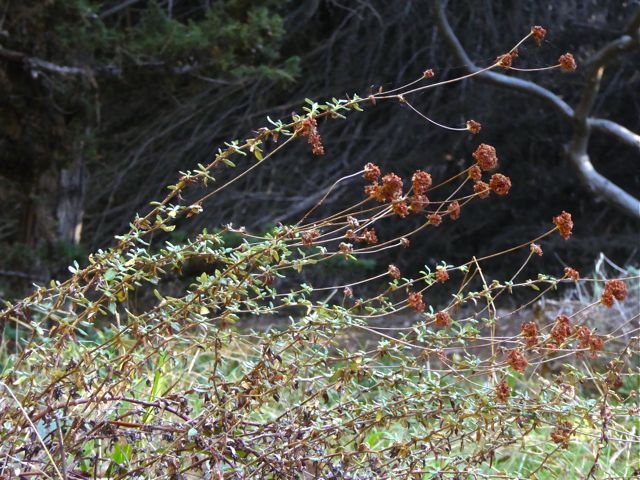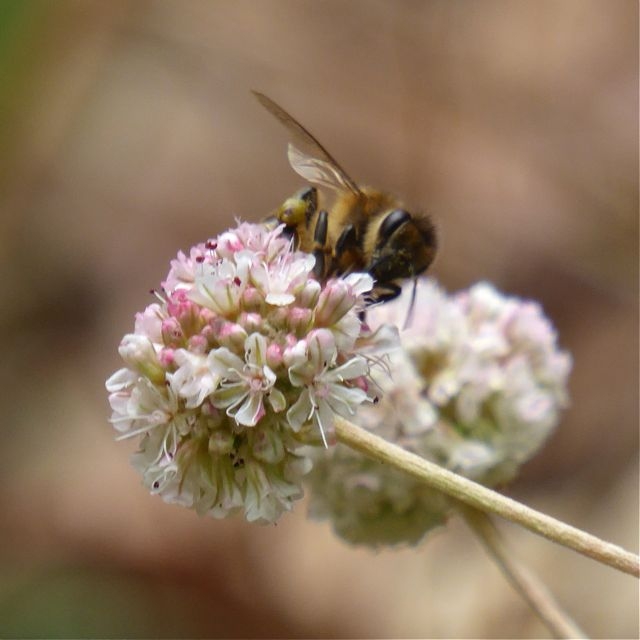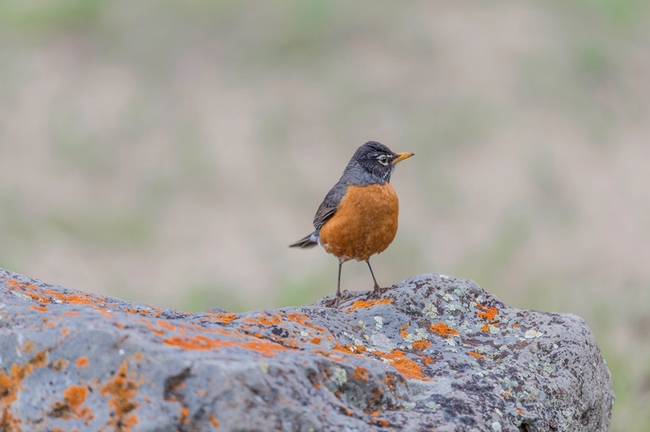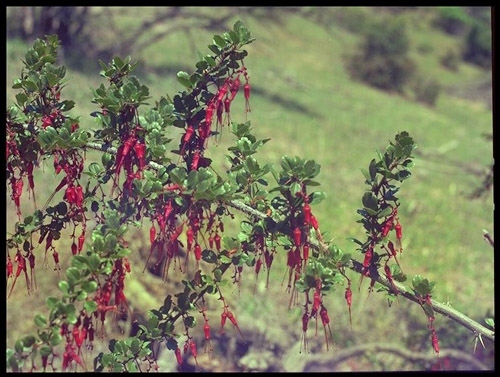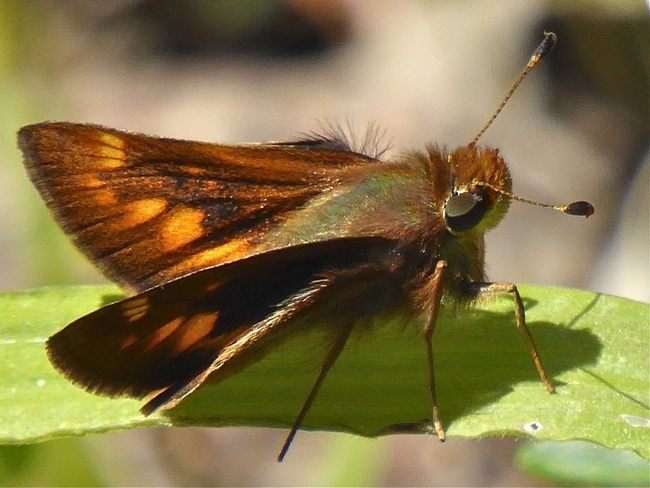- Author: Leora Worthington
- Editor: Kamille Hammerstrom
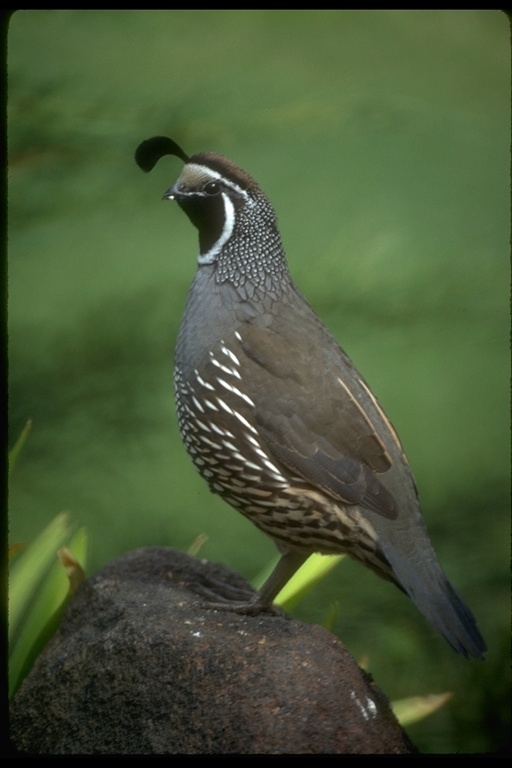
Each of these is native to California and attracts California thrashers, western bluebirds, American robins, northern flickers, Nuttall's woodpeckers, mockingbirds, cedar waxwings. scrub jays, northern flickers, yellow-rumped warblers and game birds such as wild turkey, pheasant, California quail and grouse. The blue elderberry on this list can be enjoyed by both people and birds! I have seen all of these bird species except grouse and pheasant in my yard; they are part of our area.
Evergreen:
Holly-leaved cherry - Tall, dense shrub
Manzanitas - Multiple species of shrubs or trees
Toyon (Christmas berry, California holly) - Mounding form to 8 feet
Wax myrtle - Mounding form to 30 feet
California coffeeberry (buckthorn) - Dense shrub that is easily pruned
Deciduous:
Blue elderberry - 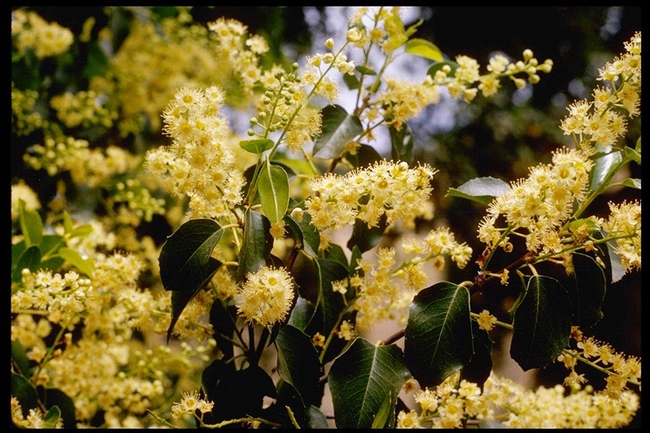
California wild rose - Mounding form
California grapes - Climber or woody ground cover
Fuchsiaflower gooseberry - Mounding growth, has scarlet flowers and thorns
Poison oak too! - Let the birds plant their own or control it if you prefer
Additional references:
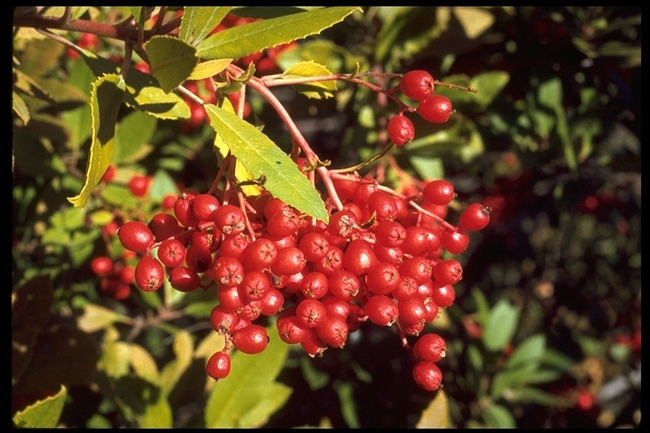
Birds and the plants they like: http://theodorepayne.org/mediawiki/index.php?title=Birds
Our own blog: Wildlife Friendly Gardens Part I and II
Don't forget to subscribe to our blog so that you receive an email notification when a new post goes up. If you have questions, contact us online, by phone or in person to get answers to your gardening quandaries!
- Author: Carol Nickbarg
- Contributor: Native Plant Subject Group
- Editor: Kamille Hammerstrom
Planning a Wildlife-Friendly Garden
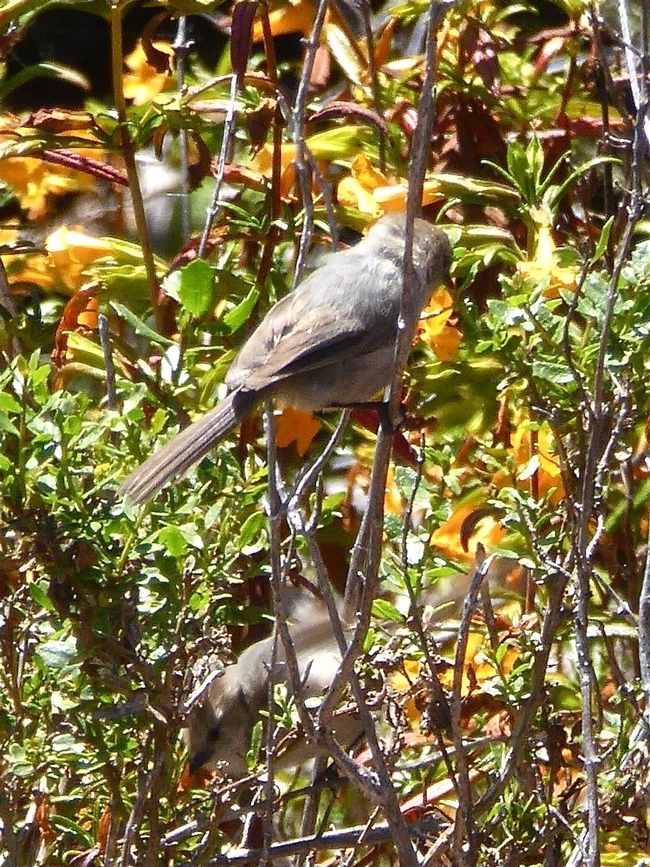
- Observe your garden throughout the year. What types of desirable wildlife are already in your garden? Where in the garden do they appear: plant species/physical feature, shade/sun, feeding/nesting? Do they appear seasonally or year-round? Not all plants (even of the same species) or physical features are alike. For a plant species that thrives in either sun or part shade, one may be more favored than the other depending on the insect, bird or mammal using it. Likewise, birds may not perch on a snag fully exposed to strong winds, but may use the less exposed snag found only a few feet away.
- Research your area. What kinds of plants and wildlife are native to local areas similar to your property (climate, exposure, soil type, topography). Parks (state, county) and local wildlife organizations are wonderful resources, with downloadable lists and profiles of flora and fauna, often sorted by the different habitats found in local wildlands.
- Which wildlife species in your area would you like to see in your garden? Which need support and could benefit from your garden? Which plants and physical features would encourage their presence? Physical features need not be large or require major construction. Numerous small and simple features such as a pile of stones, a bee nest structure, a birdhouse can create benefits greater than the “sum of their parts.” What seems minor to us, e.g., a downed branch, may already be host to beneficial decomposers we can't see and used by other wildlife we can.
- Observe your garden again for undesirable plants, wildlife or features. Choose control methods that will not conflict with your wildlife-friendly goals, e.g., avoid herbicides for weed control, which may also harm desirable plants.
- Select suitable native plants or physical features. As your garden's overall diversity becomes richer, so will its range of potential habitats and wildlife. Make changes gradually, regardless of whether your garden is young, mature or somewhere in-between: introduce two or three native plant species at a time (vary understory height, flower size and shape, bloom time), two or three types of physical features at a time. For young gardens or gardens with low wildlife presence, start by encouraging insects, then move up in phases to birds, reptiles, small mammals as desired.
Other Considerations
Research potential risks to family or pets associated with plants or wildlife you are considering for your garden. We provide the following links for you to research your questions about people, pets, and wildlife, but always check with your physician or veterinarian for the final word on potential risks.
- American Society for the Prevention of Cruelty to Animals (ASPCA)
- Bay Area Lyme Foundation
- Univeristy of California Division of Agriculture and National Resources (UCANR)
Natural Nuisances
Check for unique behaviors when researching wildlife. For example, a seasonal pond may attract the Pacific treefrog (Pseudacris regilla), a favorite of this writer's but admittedly very vocal and very loud: one frog's “serenade” to another may become an unwelcome disruption of peace and quiet.
Governing Agencies
Always consult with relevant HOA, city, county and/or other agencies during your planning phase.
- Physical features
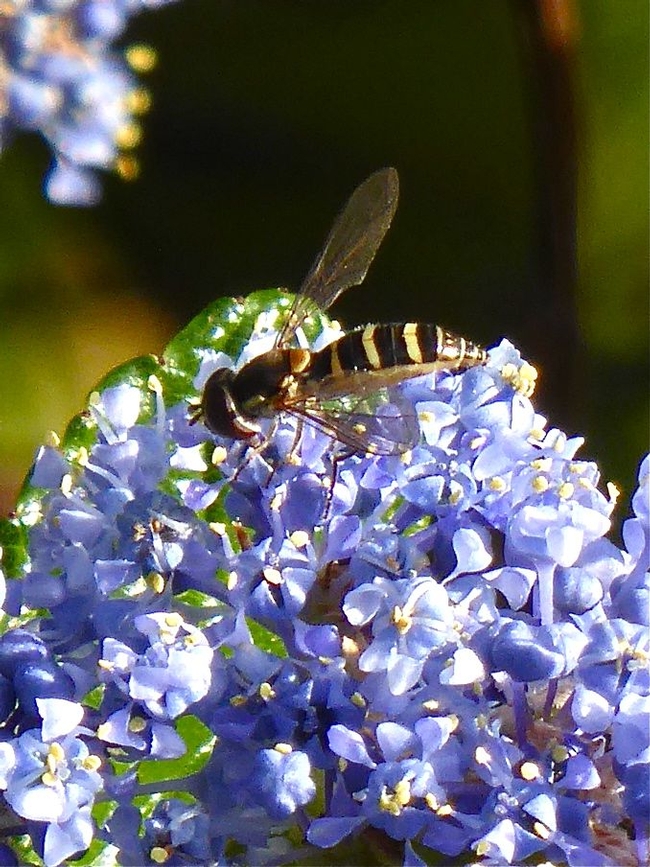 Syrphid fly feeding on Ceanothus pollen. Syrphid larvae are garden beneficials, feeding on aphids, scales, thrips and other soft-bodied insects. Photo: © Carol Nickbarg.
Syrphid fly feeding on Ceanothus pollen. Syrphid larvae are garden beneficials, feeding on aphids, scales, thrips and other soft-bodied insects. Photo: © Carol Nickbarg.- Some features or changes (e.g., terracing, drainage) to your garden may require a permit.
- Some features, especially certain water features, may alter the ecology of your property: as plants and wildlife come to depend on the feature, governing agencies or other entities may not allow the feature to be removed later, even if the feature is man-made.
- Plants
- Plant installation or removal: local urban forestry departments or other agencies may have preferred species or “avoid” lists for certain plants in your area; tree or other vegetation removal may require a permit.
Maintaining a Wildlife-Friendly Garden
- Regularly inspect any netting or structures to be sure birds, reptiles, small mammals have not become trapped.
- Regularly maintain birdbaths or other water features.
- Manually remove weeds and invasive plants.
- Practice integrated pest management.
- California Invasive Plant Council (Cal-IPC)
- PlantRight
- The Gardener's Guide to Common-Sense Pest Control: Completely Revised and Updated. 2013. William Olkowski, Sheila Daar, Helga Olkowski. Taunton Press.
- University of California Statewide Integrated Pest Management (UC IPM)
Final Thoughts...
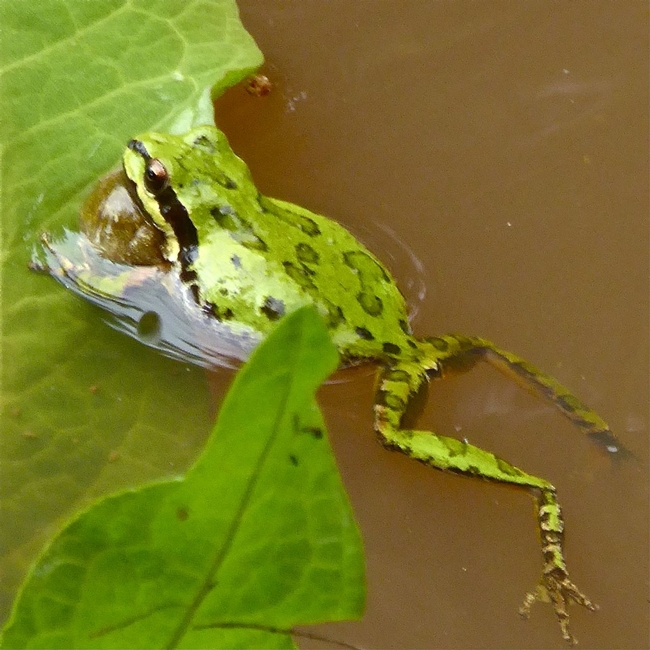
References and Additional Resources
References
- Skippers, Encyclopedia of Life
- Pacific treefrogs, National Parks Traveler
This is the second of a two-part post. To read the first part or check out the rest of the references and resources for this post, visit Part I on our website.
For local inspiration, be sure to attend our 2017 UC Master Gardeners of Monterey Bay Garden Tour on September 9th, 2017. More information about the Garden Tour can be found here.
If you'd like to purchase any of the reference books mentioned, use our AmazonSmile account! It won't cost you anything but we'll get a small donation with each purchase made through our link. Don't forget to subscribe to our blog so that you receive an email notification when a new post goes up. If you have questions, contact us online, by phone or in person to get answers to your gardening quandaries!
- Author: Ed Morrow
Looking for some good ideas for Christmas gifts for gardening friends and family? These are the three best books to keep within reach if you are a California native plant gardener.
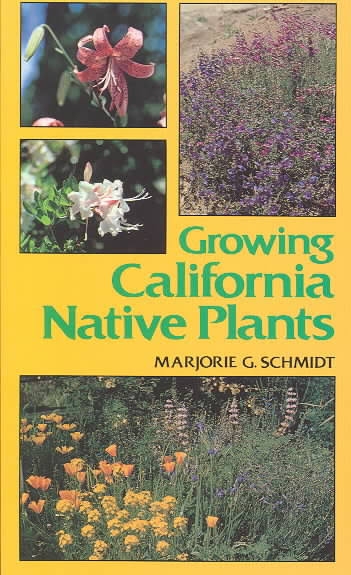
Mrs. Schmidt (1905-1989) was a California native and lived her entire life in California. Born in Berkeley, she spent her childhood summers in Napa with her grandmother, an amateur botanist who introduced her to native plants. Over her lifetime Mrs. Schmidt established three gardens: the first was in Berkeley, the second was in Los Gatos and was known for its extensive collection of Ceanothus (California lilac), and the last was in Hayfork, in Trinity County where she used her 90 foot by 20 foot planting bed to trial plants for drought tolerance. She published her first article “California Natives for California Gardens” in the California Horticultural Society Journal in 1941, and she continued to publish over the next forty years. Her popular column “Natives For Your Garden” ran for ten years in Fremontia, the journal of the California Native Plant Society, and was the basis for her book.
In her opening chapters Mrs. Schmidt introduces California natives, and leads the gardener through the intricacies of preparing and planting seeds, and then explains the techniques of propagation by cuttings, layering, and division. A chapter is devoted to maintaining a native plant garden. The heart of the book is the five chapters that comprehensively cover more than three hundred species of native wildflowers, both annuals and perennials, shrubs, bulbs, and trees. Mrs. Schmidt introduces each plant with a brief botanical description of its habit, foliage, flowers, fruit, and distribution. She follows with a paragraph on how to propagate the plant, along with its requirements for sun, water, and space in the garden. She concludes with an Estimate of Garden Value, assessing the plant's strengths, weaknesses, and suitability for various garden environments.
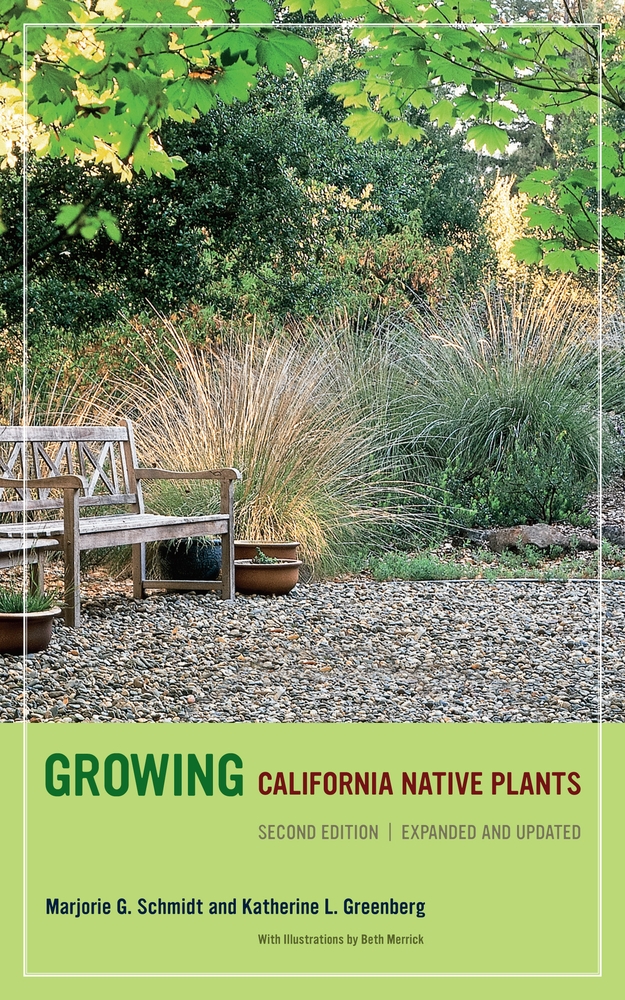
The second edition was written by Katherine L. Greenberg, a fifth generation Californian, born and raised in Monterey County. She is an award winning garden designer, and was at various times the President of the Mediterranean Garden Society and the Pacific Horticulture Society.
Mrs. Greenberg extensively revised Mrs. Schmidt's plant lists. She added plants whose horticultural potential was once unrecognized, like Achillea millefolium, but are now garden staples, and deleted others, Delphiniums for example, whose garden potential was never realized. She introduced a section on plant communities and a chapter on native grasses whose importance grew significantly in the thirty years since the first edition. There is also a new chapter on designing a California native garden.
Why Have Both Editions?
The first and second editions of Growing California Native Plants are really two different books. The first edition is printed on coarse white stock, illustrated with black and white line drawings, and has only eight pages of small color photographs wedged into the middle of the book. The second edition is printed on glossy white paper, and almost every entry is illustrated with a color photograph. Mrs Schmidt's first edition is, however, more technically sophisticated and detailed, especially in the sections on propagation. Mrs. Schmidt does not shy away from using botanical terms to describe plants; and for genera with lots of species, Arctostaphylos (manzanita) and Ceanothus for example, the number of different species she covers is more extensive. In Mrs. Greenberg's second edition the botanical profile is reduced into a brief entry at the heading of each article, but there are chapters on grasses and garden design not in the first edition. Overall, her book more accurately reflects the range of native plants now available at good nurseries. Both editions have a glossary and extensive list of plants for specific situations. The first edition can still be had from on-line bookstores, cost less than four dollars, and is a good investment. I've got two, one for now, and another for when the first one is worn out.
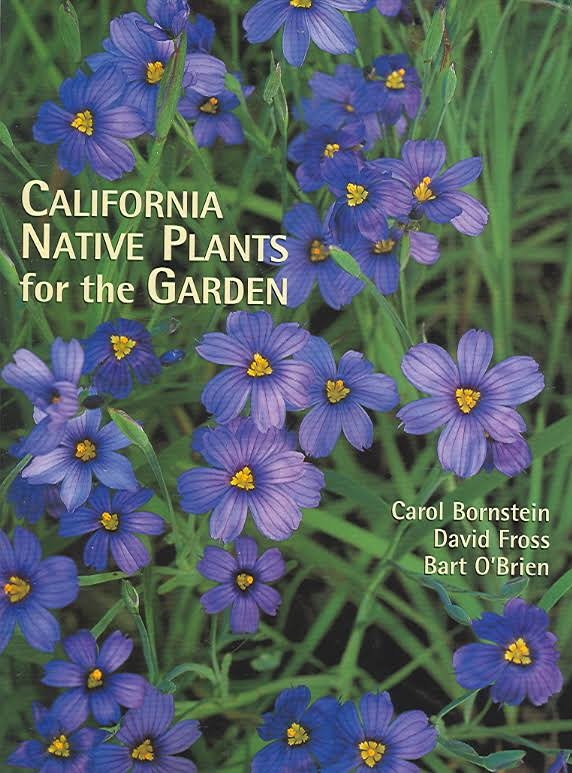
California Native Plants for the Garden is the combined work of three authors. The first, Carol Bornstein, was formerly the Director of Horticulture at the Santa Barbara Botanic Garden and is now the Director of the Nature Gardens at the Natural History Museum of Los Angeles County. David Fross is the founder of Native Sons nursery in Arroyo Grande, California, and lectures at California Polytechnic State University, San Luis Obispo. He is also the author of the the standard work on Ceanothus. Bart O'Brien was for many years the Director of the Rancho Santa Ana Botanic Garden in Claremont, CA, and is now Director of the Regional Parks Botanic Garden located within Tilden Park in the hills above Berkeley, California.
Each entry begins with a brief listing of the plant type, the geographic zones where it will grow, its requirements for light, soil, and water, and its natural habitat and range. What follows is a mini-essay on the plant's growth habit, how to care for the plant, and how it can be used in the garden. If there are cultivars, they are evaluated as well. These mini-essays are thorough, insightful, and give the reader the benefit of the more than 25 years experience of each of the authors.
The decades long arc between Mrs. Schmidt's book and California Native Plants for the Garden is highlighted by the number of cultivars described in this book. Varieties and selections of plants are naturally occurring variations that usually come true when grown from seed. Cultivars, however, are created though human intervention and require vegetative propagation to reproduce. The effort that has gone into the development and production of the large number and stunning variety of cultivars of California natives available in nurseries shows the robustness of native horticulture. The Shrubby Monkeyflower (Mimulus), for example, over the past fifteen years has been bred into a rainbow of colors that vary from white to orange to vivid reds. These patent protected cultivars are a far cry from their wild country cousins who appeared in Mrs. Schmidt's book.
Why garden with California native plants?
For many years California natives earned their place in the garden because they were drought tolerant, or they were bug friendly, or they bolstered the ecosystem. Those are all good reasons, but California natives are also beautiful plants. For a plant to have a place in the garden, regardless of its other virtues, it must be attractive. In a garden just off of Carmel Valley Road there is a Garrya elliptica (silk tassel bush) that in full winter bloom is as memorable as your first sight of a Christmas tree. In the garden at MEarth in Carmel Valley there is a Ribes sanguineum (flowering currant) that in mid-spring is a heart stopping cascade of pink blossoms. That is the message of all three of these books. California natives are beautiful plants and one of the best reasons for living in California.
- Author: Kamille Hammerstrom
- Contributor: Native Plant Subject Group
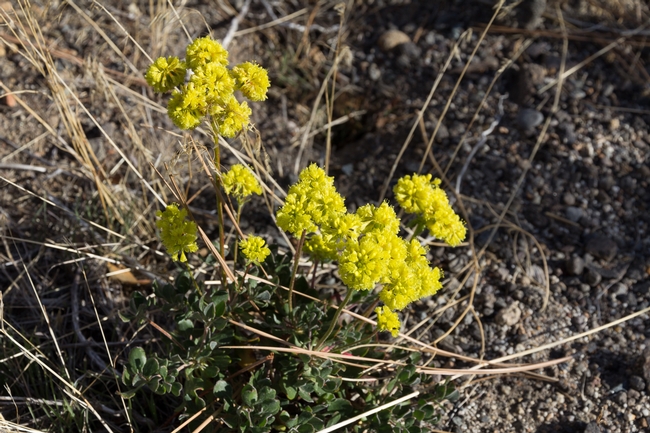
Native buckwheats come in both annual and perennial forms. They are some of the most popular nectar sources for butterflies and beneficial insects. The flowers last a long time, turning a rusty orange or chocolate brown (depending on the species) when the seed heads develop in the fall, so they add interest to the garden in all seasons. Buckwheats are very drought tolerant and some species can even handle salt spray.
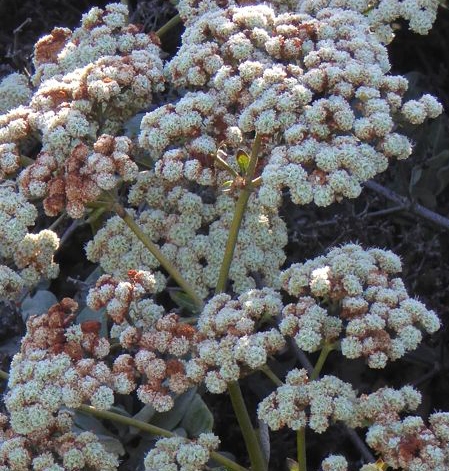
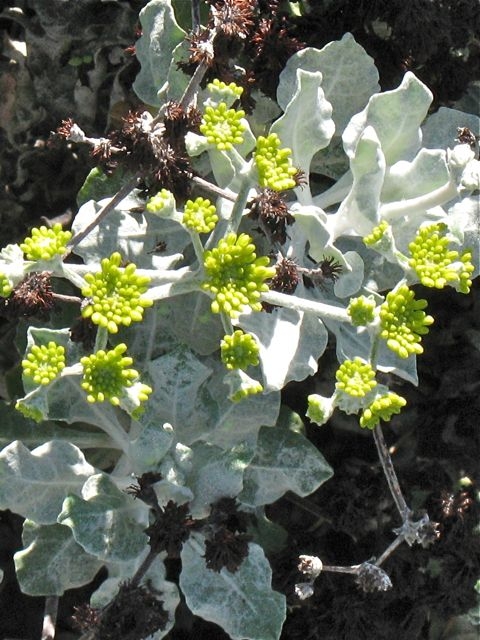
In addition to native plant sales, you can find buckwheats at some of the local native plant nurseries. Check out the California Native Plant Society's search engine for where to buy. For more information on buckwheat, here are some good sources: pests, more information on different species of buckwheat, and their use in hedgerows. To see what buckwheat species are found in your area, visit the Calscape website. You can enter map coordinates or a street address to find a list of California plants that are native to your location. May the buckwheat be plentiful in your future garden!
